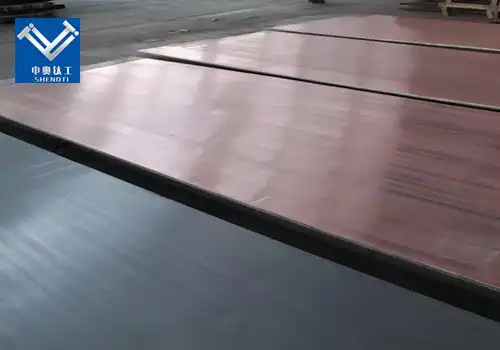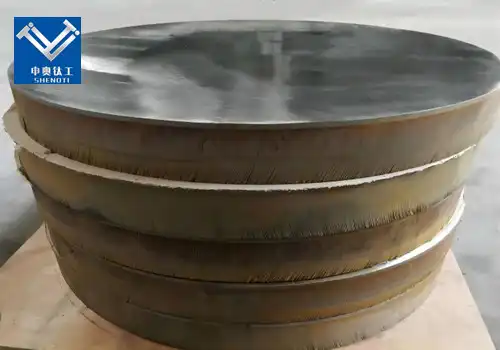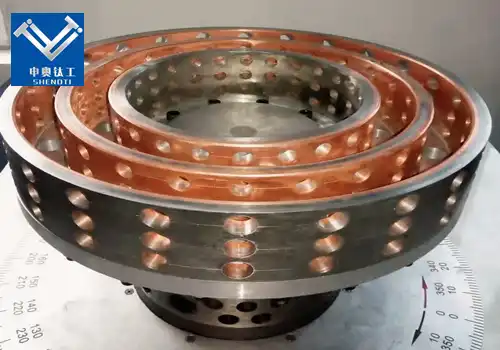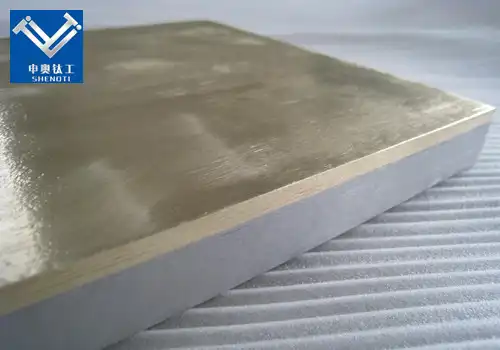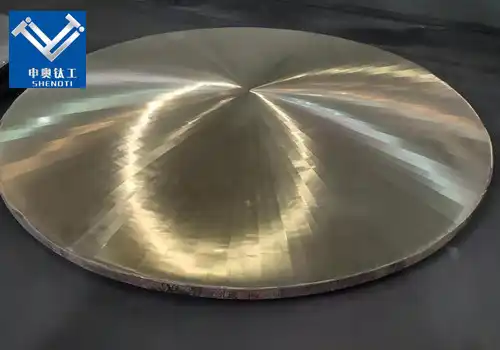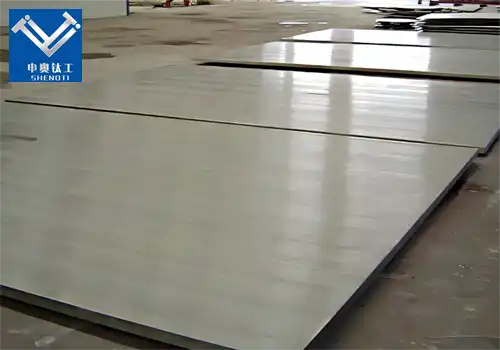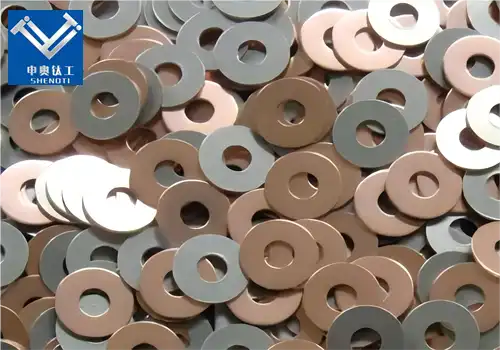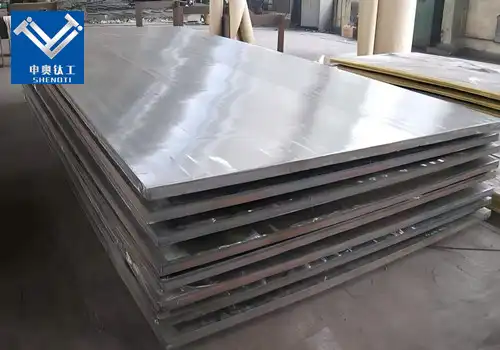
Why Use Copper Alloy Steel Clad Plate
2025-07-05 15:31:38
What is Copper Alloy Steel Clad Plate?
A copper alloy steel clad plate is a bimetallic or multilayer material created by bonding a layer of copper alloy to a base of carbon or stainless steel. This hybrid structure combines the superior electrical and thermal conductivity of copper alloys with the high strength and durability of steel, resulting in a high-performance material that excels in demanding industrial applications.
Why Use Copper Alloy Steel Clad Plate?
Superior Combination of Properties
The key advantage of copper alloy steel clad plates lies in their unique combination of:
Excellent electrical and thermal conductivity (from the copper alloy)
High mechanical strength and structural integrity (from the steel core)
Cost efficiency (reduced use of expensive copper alloy while maintaining performance)
Corrosion and wear resistance (depending on copper alloy composition)
This composite material eliminates the trade-off between strength and conductivity, offering optimized solutions for modern engineering challenges.
How Are Copper Alloy Steel Clad Plates Manufactured?
Explosion Welding Technology
Explosion welding is one of the most widely used methods for producing copper alloy steel clad plates. This process uses a controlled explosive force to bond the copper alloy to the steel substrate at a molecular level without melting the materials.
Advantages of explosion welding:
Strong, defect-free metallurgical bond
Wide compatibility between copper alloys and steel grades
Preservation of base metal properties due to low heat input
Hot Rolling and Diffusion Bonding
Hot rolling involves bonding metals at elevated temperatures followed by rolling to achieve the desired thickness. Diffusion bonding, typically performed in a vacuum or inert atmosphere, uses time and temperature to form atomic bonds.
These techniques are suitable for producing copper alloy steel clad plates for structural or precision applications where bond uniformity and surface finish are critical.
Applications of Copper Alloy Steel Clad Plates
1. Power Transmission and Electrical Infrastructure
Copper alloy cladding ensures high conductivity and corrosion resistance in:
Busbars and switchgear components
High-voltage transformers
Grounding systems
Steel provides the necessary mechanical support, reducing total material cost while maintaining excellent performance.
2. Chemical and Petrochemical Industry
In chemical plants and refineries, copper alloy steel clad plates are used in:
Heat exchangers and condensers
Reactor vessels and columns
Pipeline and tubing systems
Copper alloys such as CuNi (Copper-Nickel) and brass offer resistance to acidic, saline, and alkaline environments, while steel offers structural strength.
3. Marine Engineering and Offshore Platforms
In harsh marine environments, copper alloy steel clad materials are used to fabricate:
Seawater-cooled systems
Hull protection plates
Corrosion-resistant piping and valves
The copper alloy surface acts as a natural biofouling inhibitor, while the steel ensures structural stability.
4. Metallurgical and Mining Equipment
Copper alloy steel clad plates are essential in metallurgical processes where high temperatures and corrosive slags are present. Typical components include:
Furnace linings
Anode plates and cathode plates
Smelting pots
Types of Copper Alloys Used in Cladding
CuNi (Copper-Nickel) Alloys
Well-known for excellent corrosion resistance, especially in seawater, CuNi alloys are used for cladding in marine, desalination, and power sectors.
Brass (Copper-Zinc Alloy)
Brass-clad steel plates offer good conductivity, machinability, and corrosion resistance, often used in decorative or low-voltage applications.
Phosphor Bronze
This alloy of copper with tin and phosphorus offers superior wear resistance and fatigue strength, suitable for cladding in mechanical systems and bushings.
Beryllium Copper
This high-performance alloy offers excellent hardness, conductivity, and non-sparking properties, often used in aerospace and electronics.
Technical Specifications of Copper Alloy Steel Clad Plate
|
Property |
Typical Range / Options |
|
Base Steel |
Carbon Steel (Q235, Q345), Stainless Steel |
|
Cladding Alloy |
CuNi, Brass, Bronze, BeCu |
|
Cladding Thickness |
0.5 mm – 5 mm |
|
Total Plate Thickness |
2 mm – 100 mm |
|
Bonding Method |
Explosion Welding / Hot Rolling / Diffusion |
|
Bond Strength |
≥ 135 MPa |
|
Electrical Conductivity |
≥ 80% IACS (Copper side) |
|
Standards Compliance |
ASTM B898, GB/T 8165, ASME SB-432 |
Advantages Over Monometallic Materials
|
Feature |
Copper Alloy |
Steel |
Copper Alloy Steel Clad Plate |
|
Conductivity |
★★★★★ |
★★ |
★★★★ |
|
Mechanical Strength |
★★ |
★★★★★ |
★★★★ |
|
Cost Efficiency |
★ |
★★★★ |
★★★★ |
|
Corrosion Resistance |
★★★★ |
★★ |
★★★★ |
|
Fabrication Flexibility |
★★★ |
★★★★ |
★★★★ |
By leveraging copper alloy steel clad plates, engineers can design smarter systems that balance performance, weight, and budget.
Advantages Over Monometallic Materials
|
Feature |
Copper Alloy |
Steel |
Copper Alloy Steel Clad Plate |
|
Conductivity |
★★★★★ |
★★ |
★★★★ |
|
Mechanical Strength |
★★ |
★★★★★ |
★★★★ |
|
Cost Efficiency |
★ |
★★★★ |
★★★★ |
|
Corrosion Resistance |
★★★★ |
★★ |
★★★★ |
|
Fabrication Flexibility |
★★★ |
★★★★ |
★★★★ |
By leveraging copper alloy steel clad plates, engineers can design smarter systems that balance performance, weight, and budget.
Common Industry Terms Related to Copper Alloy Steel Clad Plate
To better understand this material’s capabilities and application, here are several technical terms:
Cladding Ratio – Proportion of clad metal to total plate thickness
Metallurgical Bonding – Atomic-level joining ensuring no delamination
Bimetallic Transition Joints – Interfaces between dissimilar metal systems
Electrochemical Compatibility – Resistance to galvanic corrosion
Thermal Fatigue Resistance – Ability to withstand temperature cycling
Sustainability and Recycling Benefits
The use of copper alloy steel clad plates contributes to sustainability in manufacturing by:
Reducing reliance on scarce or costly copper alloys
Lowering energy use in fabrication and forming
Extending service life of equipment through corrosion protection
Facilitating easy material separation and recycling
As green manufacturing becomes essential, clad metal technology offers a practical solution.
How to Source High-Quality Copper Alloy Steel Clad Plates
When sourcing copper alloy steel clad plates, consider the following:
Manufacturer’s bonding technology expertise
Material traceability and quality certification (ISO, ASTM, GB/T)
Customization capability for thickness, size, and alloy combinations
Surface finish and forming requirements
Testing reports (bond strength, microstructure, conductivity)
Look for experienced suppliers with a proven track record in explosion bonding and advanced metallurgy.
Frequently Asked Questions (FAQ)
What is the difference between copper clad and copper alloy steel clad plate?
Copper clad plates use pure copper, while copper alloy steel clad plates incorporate alloyed copper (e.g., CuNi, brass) for enhanced mechanical or corrosion properties.
Can copper alloy steel clad plates be welded or machined?
Yes. While care must be taken to preserve the cladding integrity, most plates can be welded, bent, or machined using standard industrial practices.
Are these plates suitable for high-temperature environments?
Yes. Depending on the alloy used, many copper alloy claddings can withstand high operating temperatures and thermal cycling.
How long do copper alloy steel clad plates last?
With proper use, they offer extended service life — often 2–3 times longer than traditional materials in corrosive or conductive environments.
Industries such as energy, marine, chemical processing, and metallurgy are increasingly adopting clad plate technology to reduce costs while improving performance.
Contact Us
Baoji Shenao Metal Materials Co., Ltd.
Email: zh@baojiti.com.cn
Website: www.shenaocladplate.com
Address: Baoji City, Shaanxi Province, China
Tel: +86-18729731603
YOU MAY LIKE











